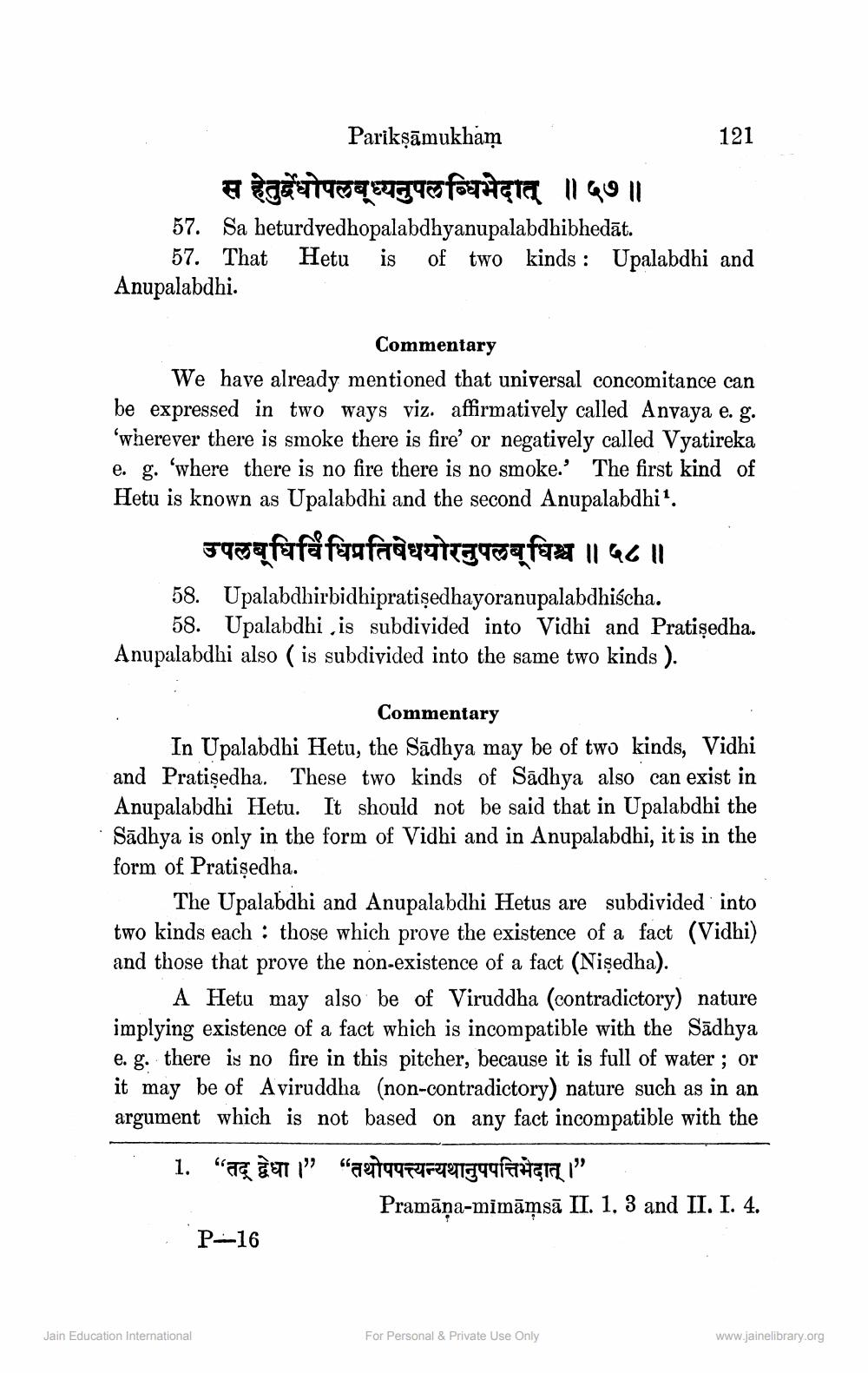________________
Parikṣāmukham
स हेतुधोपलब्ध्यनुपलब्धिभेदात् ॥ ५७ ॥
57. Sa heturdvedhopalabdhyanupalabdhibhedāt.
57. That Hetu is of two kinds Upalabdhi and Anupalabdhi.
Commentary
We have already mentioned that universal concomitance can be expressed in two ways viz. affirmatively called Anvaya e. g. 'wherever there is smoke there is fire' or negatively called Vyatireka e. g. 'where there is no fire there is no smoke.' The first kind of Hetu is known as Upalabdhi and the second Anupalabdhi1.
5qqfafafafaquatcgqoqfam || 62 ||
58. Upalabdhirbidhipratiṣedhayoranupalabdhiścha.
58. Upalabdhi,is subdivided into Vidhi and Pratiṣedha. Anupalabdhi also (is subdivided into the same two kinds ).
Commentary
In Upalabdhi Hetu, the Sadhya may be of two kinds, Vidhi and Pratiṣedha. These two kinds of Sadhya also can exist in Anupalabdhi Hetu. It should not be said that in Upalabdhi the Sadhya is only in the form of Vidhi and in Anupalabdhi, it is in the form of Pratiṣedha.
121
The Upalabdhi and Anupalabdhi Hetus are subdivided into two kinds each those which prove the existence of a fact (Vidhi) and those that prove the non-existence of a fact (Nişedha).
A Hetu may also be of Viruddha (contradictory) nature implying existence of a fact which is incompatible with the Sadhya e. g. there is no fire in this pitcher, because it is full of water; or it may be of Aviruddha (non-contradictory) nature such as in an argument which is not based on any fact incompatible with the
1. “ तद् द्वेधा ।” “तथोपपत्त्यन्यथानुपपत्तिभेदात् । "
Jain Education International
P-16
Pramāṇa-mimāmsā II. 1. 3 and II. I. 4.
For Personal & Private Use Only
www.jainelibrary.org




